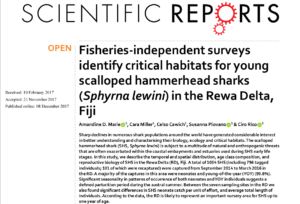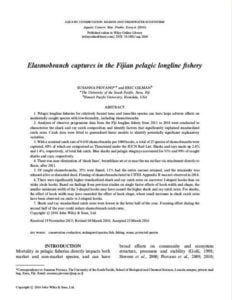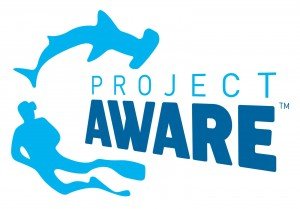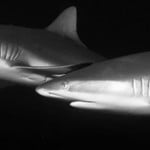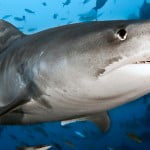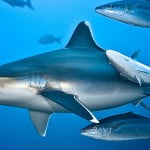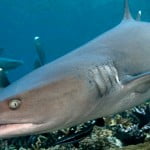Sharp declines in numerous shark populations around the world have generated considerable interest in better understanding and characterising their biology, ecology and critical habitats.More info here…
Paper – Elasmobranch captures in the Fijian pelagic longline fishery
Good paper by Susanna about the shark fisheries by the Fijian pelagic longline industry, updated and revised early 2016.
Sharks: Conservation, Governance and Management
The Great Fiji Shark Count is quoted extensively in this 2014 book “Sharks: Conservation, Governance and Management” by Erika J. Techera and Natalie Klein.
Why do hammerheads have hammer heads?
By Cara Hodgson
Sharks are one of the increasingly rare organisms seen on coral reefs. They have been eliminated from many reefs due to demand for their fins to make shark fin soup, a Chinese delicacy. In 2011, there were some big “wins” for sharks with shark finning and trading banned in several areas. Because shark sightings are now so rare just about everywhere, Reef Checkers are asked to record any sharks during their dives – even of those observed off of the transects.
One type of shark has always held a fascination as a kind of prehistoric-looking oddity that one might think was dreamed up by a Hollywood horror filmmaker – not a result of millions of years of evolution. This is the hammerhead shark. A related shark is the bonnethead – with a head shaped more like a shovel.
Looking at the wide separation between the hammerhead’s eyes, and the flat surface of the head, one wonders about the evolutionary advantage of this design?
Several hypotheses explaining the evolution of the hammerhead shark’s head – called a “cephalofoil” – have been proposed.More info here…
Project AWARE full ahead on Shark conservation in 2012
“The good news is, we know from experience, when we do the work, the ocean and its wildlife can be restored”
Roger McManus, IUCN and Project AWARE board member
Overfishing. Finning. Endangered. These are all words that we should not have to associate with global shark species.
